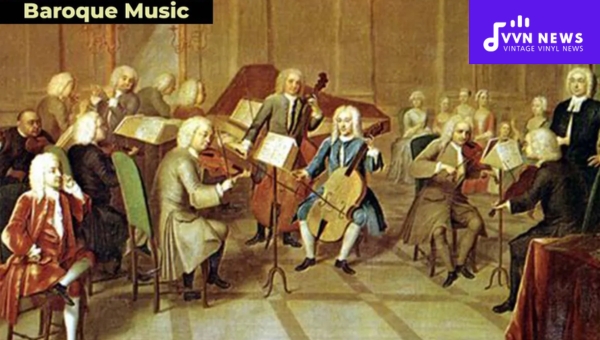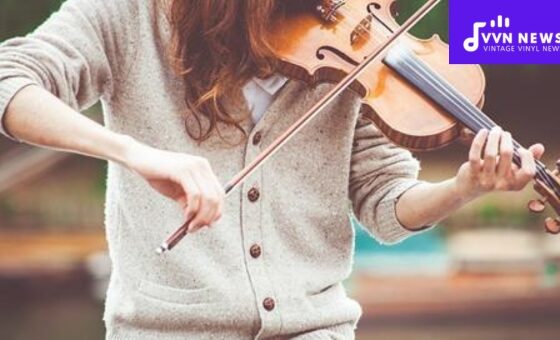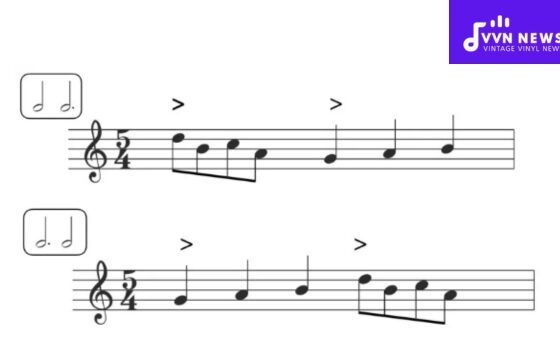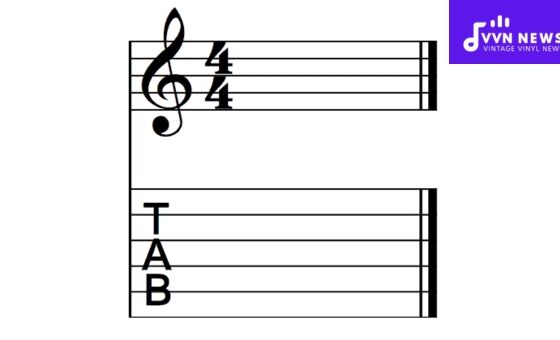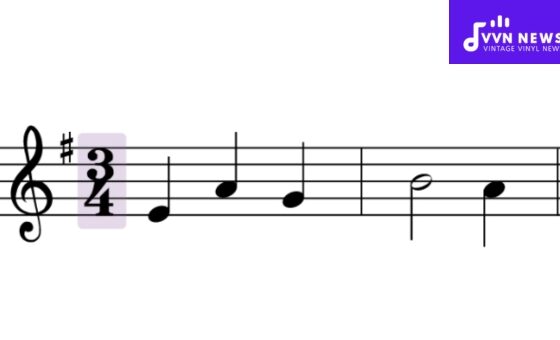Have you ever wondered about the magic behind the Baroque Music Period? This era, brimming with dynamic contrasts and exquisite complexity, has left a lasting influence on music as we know it.
Join me on this journey back in time to explore the luxuriant sounds of the 17th and early 18th centuries that continue to mesmerize audiences today.
The Baroque Music Period was an era of transformation where music became more expressive and ornate. Compositions from this time are known for their intricate detail and emotional depth.
Big names like Johann Sebastian Bach, Antonio Vivaldi, and George Frideric Handel thrived during this period, creating pieces that are still celebrated for their artistic brilliance. The rich history of this era continues to influence modern orchestral music, ensuring its legacy endures.
What Was The Baroque Music Period?
The Baroque music period refers to a distinctive era in music history that spanned from approximately 1600 to 1750. It was characterized by an intricate fusion of innovation and tradition, leading to the creation of captivating melodies and elaborate compositions.

During this time, composers sought to evoke strong emotions and create dramatic effects through their music.
The Baroque period witnessed the rise of virtuoso performers, who showcased their mastery of a wide range of instruments.
Additionally, Baroque music saw the introduction of new forms and structures such as the concerto grosso, fugue, and opera.
The period was defined by its ornate melodies, complex harmonies, and intricate ornamentation. Key composers of this era include Johann Sebastian Bach, George Frideric Handel, and Antonio Vivaldi. Their compositions continue to be cherished for their beauty and technical prowess even today.
Key Characteristics of the Baroque Music Period:
- Intricate fusion of innovation and tradition
- Captivating melodies with elaborate ornamentations
- Strong emotional expressions
- Introduction of new musical forms and structures
- Rise of virtuoso performers
- Ornate melodies with complex harmonies
The Baroque music period remains a testament to the indomitable human spirit that seeks to push creative boundaries in pursuit of artistic excellence.
Its influence can be heard in modern music genres such as classical, jazz, and even pop. The rich legacy left behind by composers of this era continues to inspire musicians and captivate audiences around the world.
Also Read: Understanding Music Transposition: A Complete Guide
History of Baroque Music
The Baroque music period emerged during a time of great cultural and artistic change in Europe. It originated in Italy in the late 16th century and gradually spread to other parts of the continent.
The term “Baroque” is believed to have been derived from the Portuguese word “barroco,” meaning irregularly shaped or extravagant, which is indicative of the complex and ornate nature of the music.
Birth of Baroque: Letanio and Stile Nuovo
The roots of Baroque music can be traced back to two key developments: the emergence of basso continuo (a system where a keyboard instrument or lute accompanied a bass line) and the theorization of new musical styles by Giovanni Artusi and Giulio Caccini.
These innovations laid the groundwork for what would become the distinct sound of Baroque music.
The Rise of Opera
One significant aspect that propelled Baroque music into popularity was the rise of opera. The first opera house, Teatro San Cassiano, opened its doors in Venice in 1637, marking a turning point for theatrical performances set to music.
Composers like Claudio Monteverdi were at the forefront, exploring emotional depth through expressive vocal lines accompanied by orchestras.
Court Composers and Concert Culture
Baroque music flourished under patronage from nobility and wealthy families who employed court composers.
These composers were responsible for creating grandiose compositions for royal events, feasts, and ceremonies.
Prominent composers such as Johann Sebastian Bach held prestigious positions in courts, leaving behind an extensive body of work.
Concerts also became popular during this time, with public performances attracting larger audiences outside aristocratic circles.
The establishment of academies, such as Accademia Filarmonica di Bologna in 1666, fostered an environment for musical education and collaboration.
National Styles: French, German, and Italian Baroque
Baroque music developed unique national styles in various European countries. The French Baroque style emphasized dance-like rhythms and elegance, and composers such as Jean-Baptiste Lully were at the forefront.
The German Baroque style featured intricate polyphony and complex counterpoint, epitomized by the works of Johann Sebastian Bach.
In Italy, vocal music thrived, with composers like Antonio Vivaldi creating iconic concertos and operas. Italian Baroque compositions were known for their expressive melodies and virtuosic embellishments.
The Decline of Baroque
As the 18th century approached, the musical landscape began to shift. The emergence of new compositional styles such as Rococo marked a departure from the elaborate ornamentation and complexity of the Baroque period.
Additionally, the focus on emotional expressions gave way to a more rational and restrained approach to music.
The death of Johann Sebastian Bach in 1750 is often seen as a symbolic end to the Baroque era. This transitional period paved the way for the Classical period with its focus on balance, clarity, and symmetrical compositions.
Despite its eventual decline, the impact of Baroque music on subsequent musical styles cannot be overstated. Its grandeur, expressive power, and technical brilliance continue to inspire musicians and captivate audiences to this day.
Also Read: Discover the Most Popular Chord Progressions in Music
Who Were the Key Composers of the Baroque Era?
The Baroque period was blessed with a multitude of talented composers whose works continue to captivate audiences to this day.

These composers pushed the boundaries of musical expression, creating timeless masterpieces that have stood the test of time. Here are some of the notable figures from the Baroque era:
- Johann Sebastian Bach (1685-1750): Bach is widely regarded as one of the greatest composers in Western music history. He wrote in a variety of genres, including sacred and secular vocal music, organ works, orchestral suites, and solo instrument pieces. His compositions, such as the “Brandenburg Concertos” and the “Mass in B Minor,” display his mastery of counterpoint and intricate musical structures.
- George Frideric Handel (1685-1759): Handel, a German-born composer who later became a British citizen, was known for his operas, oratorios, and instrumental compositions. His most famous work is the oratorio “Messiah,” with its iconic “Hallelujah” chorus. Handel’s music is characterized by its grandeur, emotional depth, and dramatic flair.
- Antonio Vivaldi(1678-1741): Vivaldi, an Italian composer, was a virtuoso violinist and one of the pioneers of instrumental music. He is best known for his collection of concertos known as “The Four Seasons,” which beautifully depict the changing seasons through music. Vivaldi’s compositions are remarkably vibrant, filled with intricate melodies and evocative harmonies.
- Henry Purcell (1659-1695): Purcell, an English composer, is considered one of the greatest composers in British musical history. His works include operas, sacred music, and instrumental pieces. His opera “Dido and Aeneas” remains one of his most celebrated compositions with its sorrowful aria “When I Am Laid in Earth.” Purcell’s music exhibits a unique blend of English tradition and Baroque innovation.
- Arcangelo Corelli (1653-1713): Corelli was an Italian violinist and composer who played a significant role in the development of instrumental music during the Baroque period. His compositions for string instruments, particularly his violin sonatas and concerto grossi, were highly influential and became models for future composers.
These are just a few examples of the remarkable composers who left an indelible mark on Baroque music.
Their works continue to inspire musicians around the world with their complexity, emotionality, and technical brilliance.
How Did Baroque Music Differ from Previous Musical Periods?
The Baroque music period stands out as a distinct era in the history of Western classical music. It marked a significant departure from the styles and conventions of previous musical periods, such as the Renaissance. Here are some key differences that set Baroque music apart:
Ornamentation and Complexity
Baroque music is characterized by its intricate ornamentation and complex compositional techniques.
Unlike the simplicity and clarity of Renaissance music, Baroque compositions were often embellished with elaborate flourishes and virtuosic passages.
Ornamentation was used to decorate melodies and add expressive nuances to the music.
Harmonic Language
During the Baroque era, composers began to experiment with harmony in new ways. They explored more complex tonal structures, including the use of dissonance and chromaticism.
This resulted in richer, more expressive harmonies that added depth and emotion to the music.
Contrasting Dynamics
While previous musical periods emphasized a relatively uniform dynamic level throughout a piece, Baroque music introduced stark contrasts in dynamics.
Composers like J.S. Bach utilized dramatic shifts between soft and loud passages to create tension and highlight important musical moments.
Basso Continuo
One defining feature of Baroque music was the basso continuo, a continuous bassline played by a keyboard instrument (such as harpsichord or organ) along with a bass instrument (such as a cello or bassoon).
The basso continuo provided a harmonic foundation for other instrumental or vocal parts to embellish upon.
Virtuosic Solo Performances
Baroque music witnessed an increased emphasis on virtuosity. Composers began composing specifically for solo instruments, showcasing their capabilities through challenging technical passages and brilliant improvisations.
Ornate Melodies
Baroque melodies were often intricate, ornamented with trills, runs, and other decorative figures.
These melodies showcased the technical abilities of both instrumental and vocal performers, adding a sense of ornamentation and embellishment to the music.
These differences in style and approach distinguish Baroque music from earlier musical periods.
The era’s focus on complex ornamentation, expressive harmonies, contrasting dynamics, basso continuo, virtuosic performances, and ornate melodies laid the foundation for the development of classical music as we know it today.
Also Read: What Is The Circle Of Fifths? [The Musician’s Secret Weapon]
Different Baroque Period Musical Forms
In the vibrant world of Baroque music, a wide variety of musical forms emerged that showcased the creativity and technical skill of composers during this era.
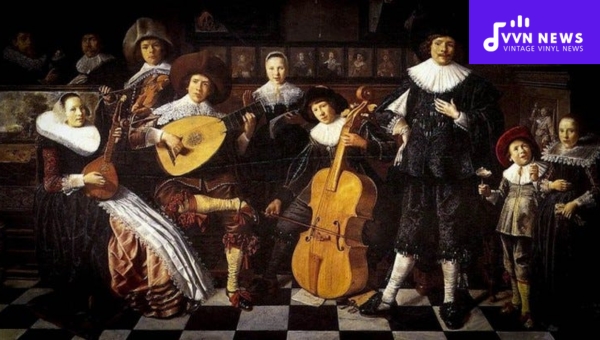
Each form had its own distinct characteristics and structure, offering listeners a diverse range of musical experiences. Let’s explore some of the most prominent musical forms of the Baroque period:
1. Opera
Opera was a major innovation during the Baroque era, blending music, drama, and visual spectacle into a captivating art form. Composers like Claudio Monteverdi and George Frideric Handel pushed the boundaries of opera with their expressive melodies and emotionally charged performances.
2. Oratorio
Similar to opera but without staging or acting, oratorio was often religious in nature and featured solo singers, chorus, and orchestra. Handel’s “Messiah” is perhaps the most famous example of an oratorio.
3. Cantata
A cantata is a vocal composition with instrumental accompaniment that combines soloists, chorus, and orchestra. Johann Sebastian Bach composed hundreds of cantatas that are revered for their complexity and intricate counterpoint.
Also Read: Harmony In Music [Enhance Your Compositions With These Tips]
4. Suite
The suite was a collection of dance movements typically performed by an orchestra or solo instrument such as harpsichord or lute. The movements varied in tempo and character, including dances like allemande, courante, sarabande, and gigue.
5. Concerto
The concerto highlighted virtuosic display by featuring a solo instrument accompanied by an orchestra. Composers such as Antonio Vivaldi popularized this form with his series of violin concertos known as “The Four Seasons.”
6. Fugue
A fugue is a contrapuntal composition where melodies or themes are introduced in one voice and then imitated by other voices throughout the piece. Bach’s fugues are renowned for their intricate textures and technical brilliance.
7. Chorale
Chorales were hymn-like compositions sung by the congregation in Protestant churches. These melodies were simple and memorable, often accompanied by organ or other instruments.
In addition to these forms, other notable genres of the Baroque period include sonata, trio sonata, motet, and ricercar. Each form offers a unique listening experience and showcases the creative genius of Baroque composers.
Understanding the different musical forms of the Baroque period allows us to appreciate the diversity and innovation found within this fascinating era.
Whether you prefer the elaborate opera or the intricate counterpoint of a fugue, exploring these varied forms will provide a deeper understanding and enjoyment of Baroque music.
Also Read: 13 Best Power Conditioners For Superior Protection [Buying Guide]
What Instruments Were Prominent in Baroque Compositions?
In the world of Baroque music, a wide range of instruments were utilized to create the intricate and melodious compositions that define this period.
These instruments, both familiar and unique, played a vital role in bringing the complex harmonies and emotional depth of Baroque music to life.
Keyboard Instruments
Harpsichord: The harpsichord was one of the most popular keyboard instruments during the Baroque era. It had a distinctive sound characterized by its plucked strings, which created a bright and vibrant tone.
Composers often wrote elaborate solo pieces for the harpsichord, showcasing its nimble fingerwork and rich timbre.
Organ: The majestic sound of the organ was another key instrument in Baroque compositions. Its ability to produce grandiose, sustained notes made it well-suited for accompanying choral works and providing a strong harmonic foundation.
Strings
Violin: The violin was arguably one of the most important instruments in Baroque music. Its versatility allowed it to be used both as a solo instrument and as part of ensembles or orchestras. Composers like Antonio Vivaldi crafted virtuosic concertos for the violin, highlighting its expressive capabilities.
Cello: The cello, with its deep and resonant tones, added a rich bass line to many Baroque compositions. It often played an integral role in providing harmonic support and counterpoint to other melodic lines.
Woodwinds
Flute: The flute was frequently employed in Baroque music due to its pure and vibrant sound. It played melodic lines alongside other instruments or even as a solo instrument. Its agile nature made it perfect for dazzling audiences with fast runs or delicate trills.
Oboe: Known for its poignant and sweet sound, the oboe was commonly featured in orchestras during this period. It added a melancholic quality to compositions, enhancing their emotional depth.
Brass
Trumpet: The trumpet was a staple of Baroque music, often heralding important musical moments or adding a majestic flair to compositions. Its brilliant and triumphant sound made it an ideal choice for fanfares and celebratory passages.
Trombone: The trombone, with its rich and resonant tones, was frequently used in choral pieces, religious works, and orchestras. Its ability to produce smooth glissandos and powerful pedal notes added depth and texture to Baroque compositions.
The variety of instruments used in Baroque music allowed composers to create a diverse range of melodies, harmonies, and textures.
Each instrument brought its unique qualities to the ensemble or solo performance, contributing to the rich tapestry of sounds that define this extraordinary period in music history.
How Has Baroque Music Influenced Modern Music?
The impact of Baroque music can still be felt in modern compositions and genres. The unique characteristics of this period have had a lasting influence on the evolution of music.
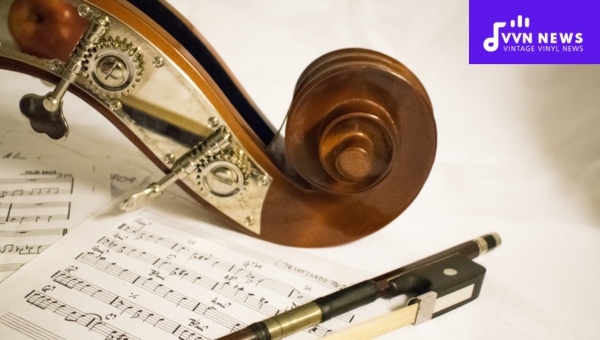
Here are some ways in which Baroque music has left its mark on modern musical styles:
- Harmonic Complexity: One significant aspect of Baroque music was its elaborate harmonic progression and use of chords. This emphasis on harmony laid the foundation for the development of complex harmonic structures in later periods, including Romantic and contemporary music.
- Melodic Ornamentation: Baroque composers often embellished their melodies with decorative ornaments such as trills, turns, and mordents. These ornate melodic patterns continue to be employed in various musical genres, adding flair and expression to modern compositions.
- Counterpoint and Polyphony: The intricate interplay of multiple melodic lines, known as counterpoint, was a hallmark of Baroque composition. This technique can still be heard in modern classical music and even in certain forms of jazz improvisation.
- Basso Continuo: The basso continuo, or “continuous bass,” was a foundation for many Baroque compositions. It consisted of a bassline played by a cello or other bass instrument along with harmonic accompaniment from a keyboard instrument like the harpsichord or organ. This concept influenced the development of basslines in various genres such as blues, jazz, and rock.
- Opera Influence: Opera emerged as a prominent form during the Baroque period, with composers like Monteverdi paving the way for this theatrical style of music storytelling. Elements from opera such as recitatives (speech-like singing) and arias (vocal solo performances) continue to be incorporated into musical theater and popular songs today.
- Influence on the Classical Period: The transition from the Baroque to the Classical period saw a continuation and refinement of many Baroque musical features. Composers like Mozart and Haydn built upon the foundations laid by Baroque composers in terms of form, structure, and ornamentation.
Whether consciously or subconsciously, musicians continue to draw inspiration from the distinctive style and techniques of the Baroque era in their compositions.
The echoes of this influential period can still be heard as we enjoy and appreciate the diverse range of music found in our modern world.
Also Read: Discover the Most Popular Chord Progressions in Music
FAQs
What are the main characteristics of Baroque music?
Baroque music is known for its ornate melodies, intricate harmonies, and elaborate ornamentation. It often features contrasting dynamics, intense emotions, and dramatic shifts in mood.
Who were some famous composers of the Baroque era?
Prominent composers of the Baroque period include Johann Sebastian Bach, George Frideric Handel, Antonio Vivaldi, and Claudio Monteverdi.
How did Baroque music differ from previous musical periods?
Baroque music broke away from the polyphonic style of the Renaissance and embraced a more expressive and complex musical language. It introduced new musical forms such as the concerto, oratorio, and fugue.
What instruments were commonly used in Baroque compositions?
The harpsichord, organ, violin, cello, flute, oboe, and trumpet were among the most commonly used instruments in Baroque compositions. The use of basso continuo (a chordal accompaniment) was also prevalent.
How has Baroque music influenced modern music?
The compositional techniques developed during the Baroque period continue to have a profound impact on modern classical music. The principles of counterpoint and harmony introduced during this era laid the foundation for future musical compositions across various genres.
Also Read: A Minor Pentatonic Scale [Create Powerful Solos With This Key]
Conclusion
The Baroque music period was a remarkable era in the history of classical music. It brought about significant changes in composition style, performance techniques, and the use of instruments.
Composers like Bach, Handel, and Vivaldi left an indelible mark on the musical landscape with their intricate compositions and innovative approaches.
The melodious beauty and dramatic expressiveness of Baroque music continue to captivate audiences to this day.
Exploring the rich history and unique characteristics of this period opens up a world of enchanting melodies and timeless masterpieces. So go ahead, and immerse yourself in the captivating beauty of Baroque music!
